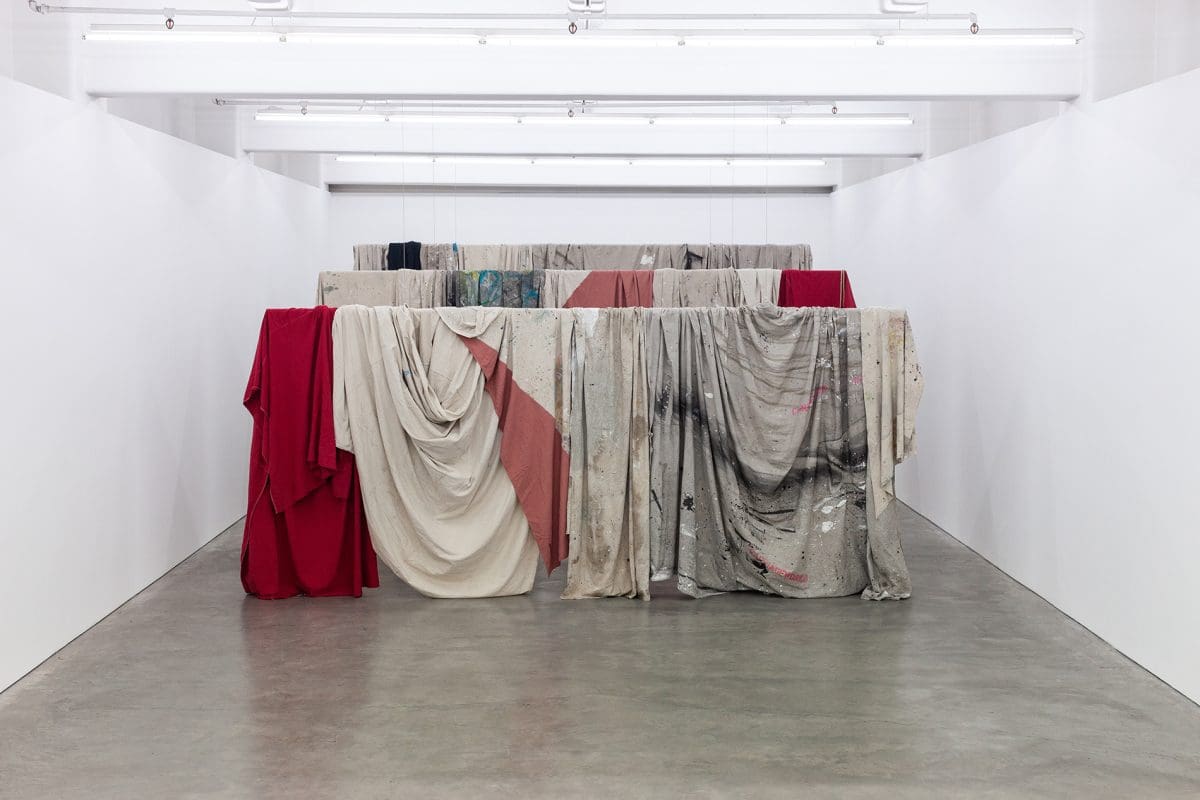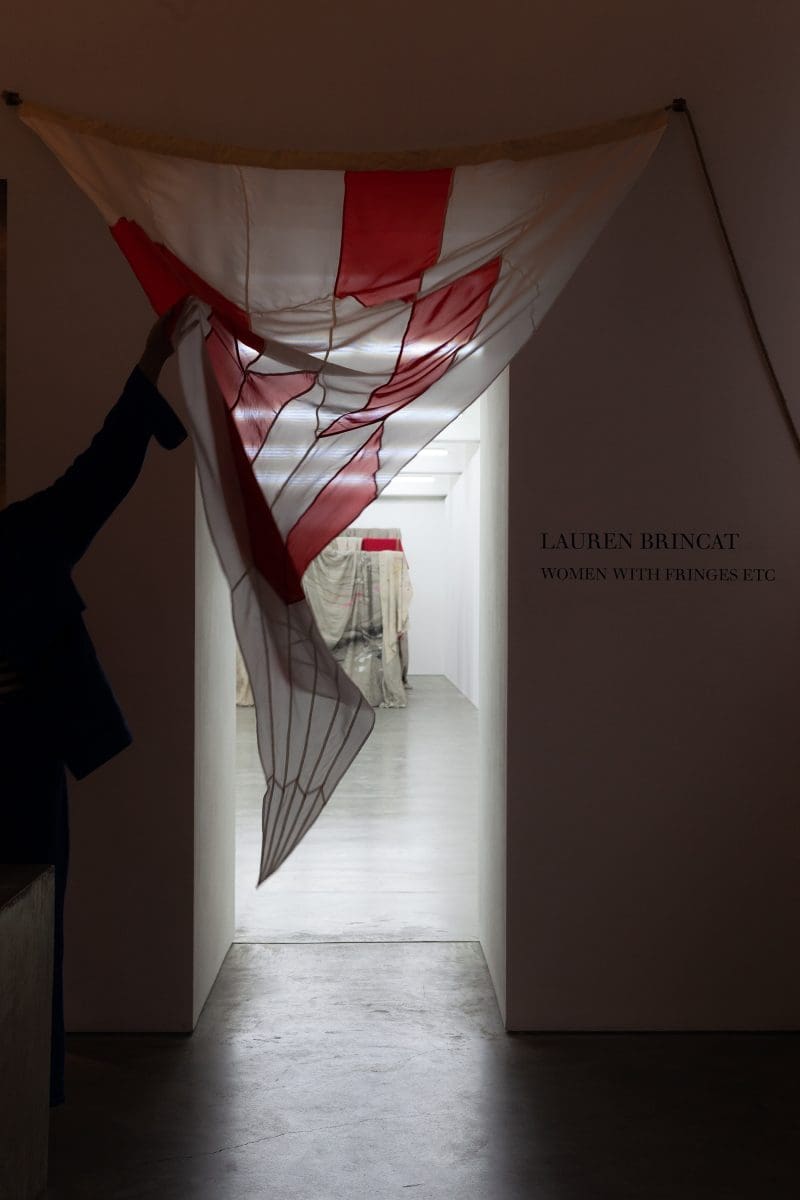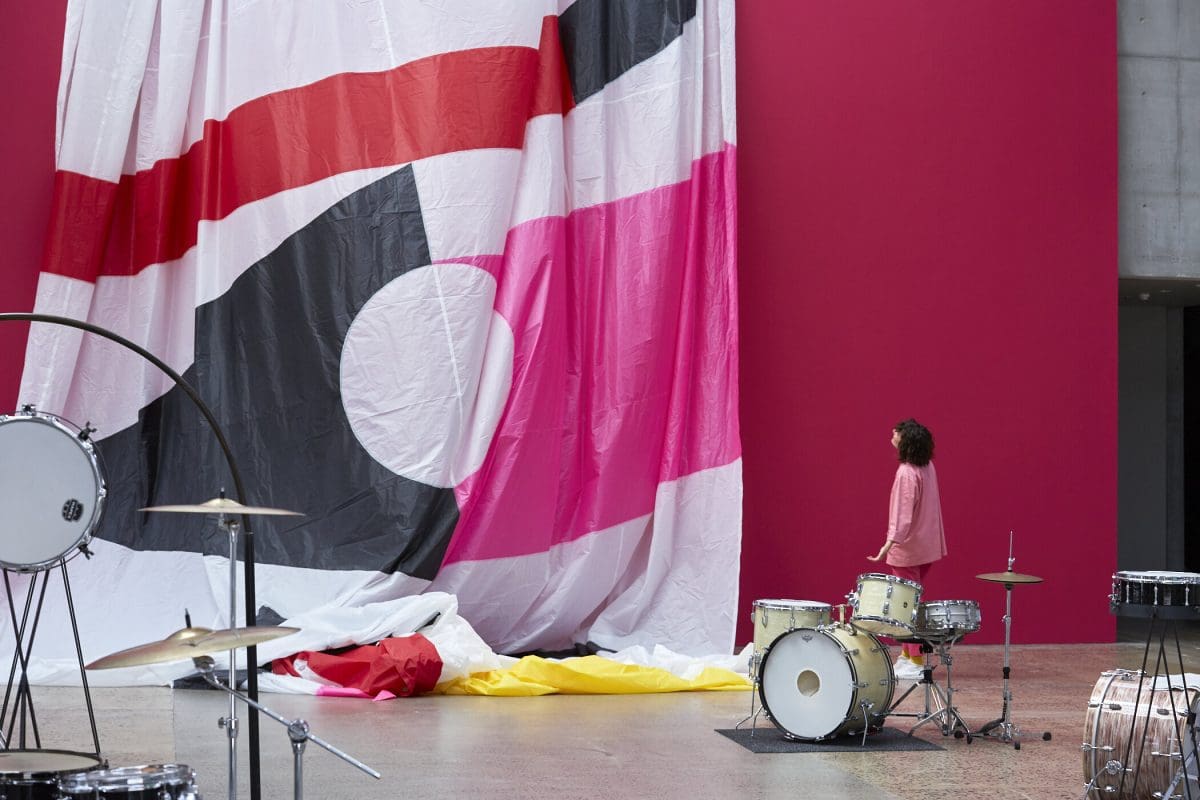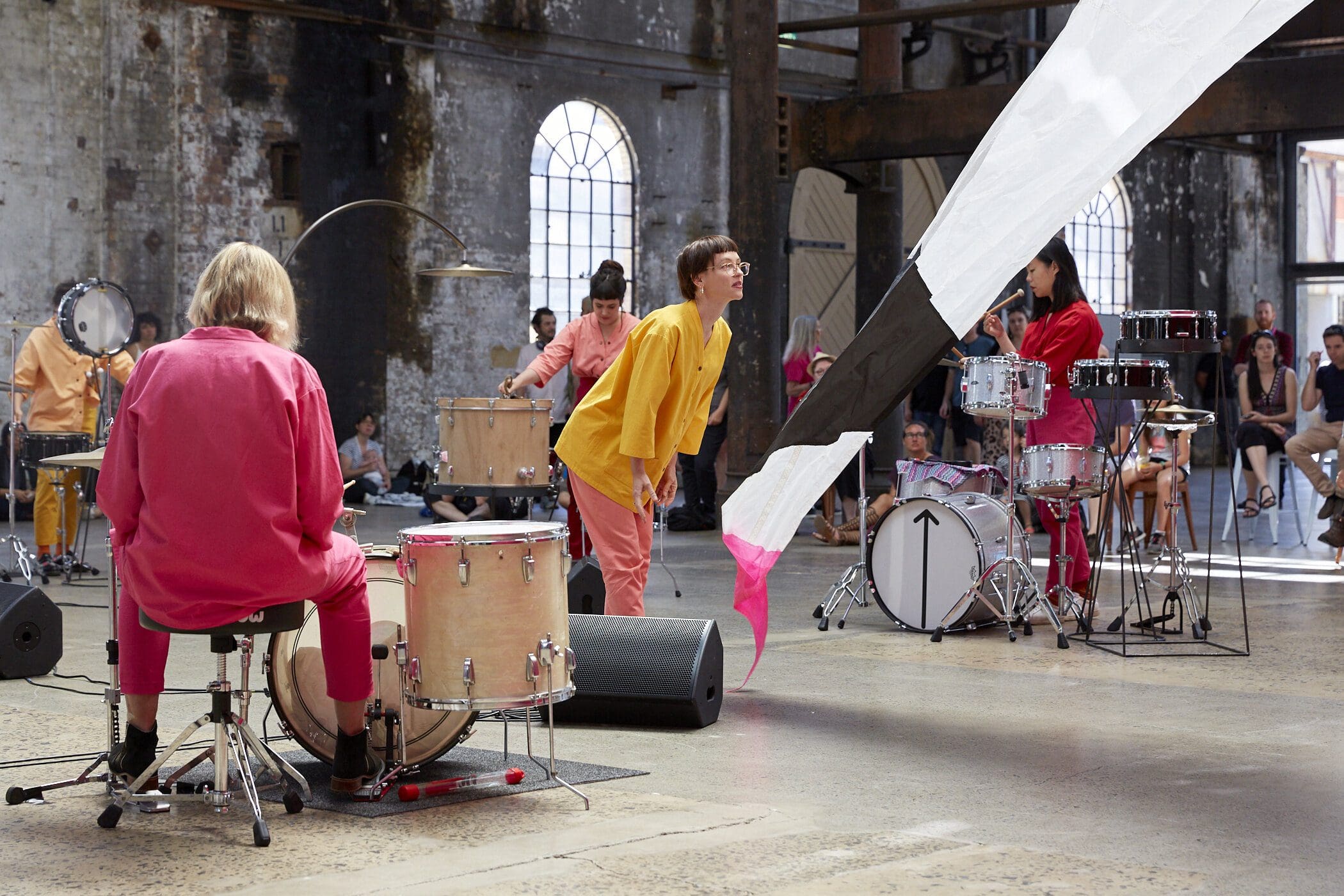
Place-driven Practice
Running for just two weeks across various locations in greater Walyalup, the Fremantle Biennale: Sanctuary, seeks to invite artists and audiences to engage with the built, natural and historic environment of the region.







With a current exhibition at Anna Schwartz Gallery and upcoming performances at the Sydney Opera House, artist Lauren Brincat talks to writer and curator Anador Walsh about curtains, going backstage, David Bowie, and the collaboration process.
I felt like I knew Lauren Brincat before meeting her. For years I have admired from afar, the way she navigates the failures of language in her sculptural, installation and performance work. We have mutual friends and have exchanged a passing Instagram message or two. But nothing could have prepared me for conversing with her. Talking with Brincat was disarming, I felt I was with an old friend. In the conversation we had about her current Anna Schwartz Gallery exhibition women with fringes etc. and her upcoming commission for the Sydney Opera House and Vivid Live, titled Tutti Presto fff, 2022, I was struck by Brincat’s unique ability to contrive situations in which the audience becomes the performer, activating her work.
Anador Walsh: Let’s start with your exhibition at Anna Schwartz, women with fringes etc. When I encountered your installation Backstage, I was really struck by its duality. The way I experienced the work as an audience member, assuming the role of a performer, moving from back to front of stage, navigating the three tiers of curtains to emerge onto the “stage”—the front half of the gallery. But I was also taken by the presence of the artist’s (your) hand. Can you speak to this?
Lauren Brincat: It’s so interesting to hear how you experienced the work. Backstage is really a work about gathering, but also about being an artist. It’s deeply personal. I was aware of the environment in which the work was going to be presented. I’ve not shown in this context [a commercial gallery] in 10 years and I knew the work had to be site specific. I largely do institutional or community engagement shows, where I respond to different sites. This is different, it’s a commercial show, but I’ve tried to just make something. So, what I’m giving is quite vulnerable. The cloths used to make this work have been gathered from people or places I’ve worked with. It’s cloth that’s been used, discarded and overlooked, like drop sheets and floor coverings.

AW: I’ve always been fascinated with curtains, the sense of mystery they conjure. My father’s a jazz musician and from a young age I was often backstage during his gigs. This work feels nostalgic to me; it evokes strong memories of building sheet forts as a kid.
LB: It’s like walking down the canals in Amsterdam and poking your head into people’s houses. Historically people had their curtains drawn, but over the years it’s become common practice to keep them open and let people see what’s happening inside your home. I’m obsessed with curtains and the idea of setting a stage but allowing someone else to be the performer. This whole show is set in reverse. You’re being invited backstage.
AW: And what about the work the audience walks through to enter the gallery, Wild is the Wind?
LB: Unlike the curtains in the gallery, this work has been dyed a specific colour and made in a specific pattern. I worked on this with Leah Gilbin, who I’ve worked with before and who I’m working with on the Opera House work. This is the original pattern for that work and responds to a song that’s influenced me. This is Wild is the Wind and the pattern is made up of notes from that song. It’s like an abstract version of the song.
AW: What’s the significance of this song for you?
LB: I really like the David Bowie version. In a lot of my works, I use the wind as an instrument, so I’ve taken the phrase “and for my love is like the wind” and used those notes to construct the pattern. It’s made of silk, which was a cloth originally used to make parachutes, so it’ll catch the wind. I want audience members to push through and feel the work. I’m okay with it touching the floor or getting ripped as people pass through. If it comes back to me dirty and torn, I’ll put it in my house and feel so much pleasure knowing that everyone who’s passed through has touched it, that some of their DNA has penetrated the work. This comes back to my wanting the audience to be the performer. I’m really just setting the stage for the audience, letting them perform, move and stir the blood. I think, after the two years we’ve just had, I just wanted to gather. That’s also why Backstage uses cloth that already had marks or has sat in museums and institutions I’ve worked with. I wanted to bring traces of those spaces and people together.

AW: I’d like to turn now to Tutti Presto fff, your upcoming work for Vivid Live at the Sydney Opera House. I’ve heard your work described as living sculptures, can you unpack that a bit for me?
LB: Tutti Presto fff will be presented on the Opera House’s forecourt. I’ve made it in conjunction with many collaborators. I worked with Leah Giblin on the 19 x 10 meter textile. Alex Dennison and I are doing the sound and we’re working with six drummers. Then two other people will activate the work, Verity Mackey and Sarah Jamieson.
AW: How does collaboration function in your work? Are you quite proscriptive or do you work in an open-ended way? Do each of the collaborators bring something to and influence the work?
LB: Making a sail for the sails [of the Opera House] was really exciting. I chose vibrant colours and worked with Leah, who’s a textile designer, patternmaker and an artist in her own right. I chose some of the finer elements of the Opera House’s architecture (the tiles), incorporated Tutti Presto fff’s score into it and asked the drummers to play these notes. I gave them Bauhaus notes, which are the coloured elements in the work and asked them to respond to this. The wind will respond to the work first and then the drummers will respond to the movement the wind gives the work.
Sarah and Verity will also be moving the work. They’ve been given some instructions, in terms of how to install the work and where to stand, but it’ll really depend on the weather conditions. There are two big ribbons and Sarah and Verity can either attach them to their bodies or let someone from the public hold and feel the work. The sail is the dancer. It’s exciting and scary. It’s totally weather dependent and I have no idea what it’ll be like on the day. I’m less attached to the outcome though and more to the experience. I’m creating an experience for you. I want you to enjoy it. I don’t want to control it.
women with fringes etc.
Lauren Brincat
Anna Schwartz Gallery
Until 18 June
Tutti Presto fff,
Sydney Opera House for Vivid Live
Four performances on: Friday 27 May, Saturday 28 May, Friday 3 June and Saturday 4 June